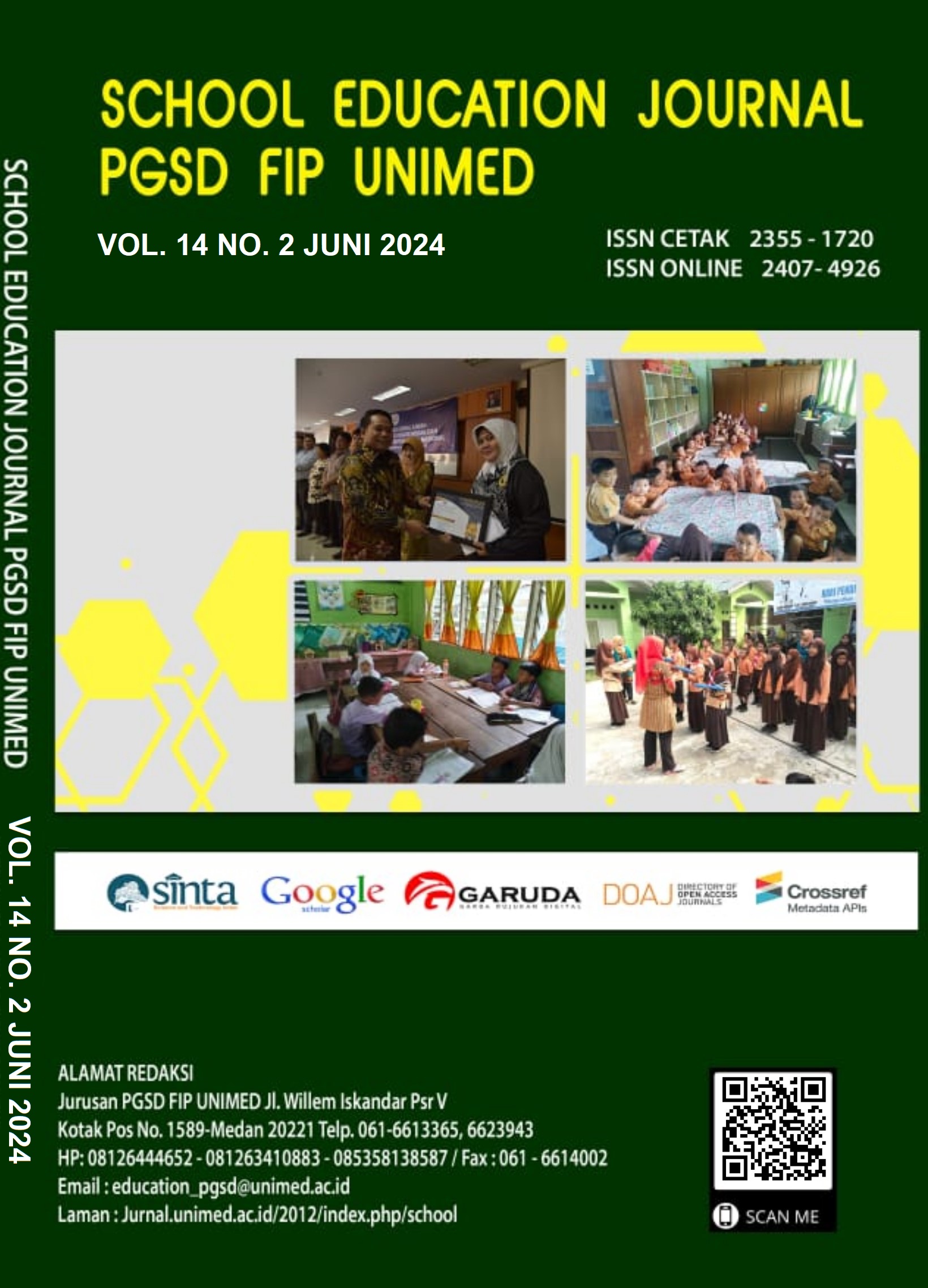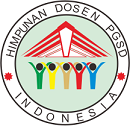EFEKTIVITAS MEDIA PEMBELAJARAN KARTON, ORIGAMI DAN BENANG PADA MATERI JARING-JARING KUBUS DAN BALOK DI SD
DOI:
https://doi.org/10.24114/sejpgsd.v14i2.59999Keywords:
Learning Media, Mathematics, Cubes, BlocksAbstract
Students often find learning mathematics difficult in elementary school, especially regarding geometric concepts such as blocks and cube nets. Many students have difficulty understanding these ideas with just verbal explanations and static images. The use of learning media such as cardboard, origami, and thread can help students visualize and understand the web of cubes and blocks better. This media allows students to see and touch three-dimensional models, understand the transformation of two-dimensional shapes, and identify sides and angles more clearly. This research aims to evaluate the effectiveness of this media in increasing students' understanding, interest and learning motivation towards this material, as well as providing insight for educators about the importance of innovation in mathematics learning methods. Data was collected by searching and collecting data from various sources, including books, journals and contemporary research. The method is known as literature study. This research shows that the use of cardboard, origami and thread learning media in teaching cube and block nets in elementary schools provides positive results. The results show that students understand concepts better and are more actively involved in the learning process. Other advantages of using this media are increased creativity and fine motor skills, increased physical and interactive involvement of students, and the ability to visualize abstract concepts.References
Astini, N. K. S. (2019, August). Pentingnya literasi teknologi informasi dan komunikasi bagi guru sekolah dasar untuk menyiapkan generasi milenial. In Prosiding Seminar Nasional Dharma Acarya (Vol. 1, No. 1).
Avyani, T., & Pranata, O. H. (2017). Penggunaan teori van hiele untuk meningkatkan hasil belajar siswa pada materi jaring-jaring kubus dan balok. PEDADIDAKTIKA: Jurnal Ilmiah Pendidikan Guru Sekolah Dasar, 4(2), 19-27.
Fitrianti, Handayani, dan Suyitno. 2022. Keefektifan Magic Box Media Terhadap Hasil Belajar Matematika Materi Jaring-Jaring Bangun Ruang Sederhana. Kertas kerja PGSD Undiksha, 8(2), 323-329.
Hasiru, Badu, dan Uno (2021). Media pembelajaran berguna untuk matematika jarak jauh. Journal of Mathematics Education Jambura, 2(2), 59-69.
Khairunnisa, G. F., & Ilmi, Y. I. N. (2020). Media pembelajaran matematika konkret versus digital: Systematic literature review di era revolusi industri 4.0. Jurnal Tadris Matematika, 3(2), 131-140.
Lestari, J., Pranata, O. H., & Lidinillah, D. A. M. (2018). Desain Didaktis Jaring-jaring kubus dan balok untuk mengembangkan kemampuan berpikir kreatif siswa. PEDADIDAKTIKA: Jurnal Ilmiah Pendidikan Guru Sekolah Dasar, 5(1), 163-273.
Nasution, S. H. (2018). Pentingnya literasi teknologi bagi mahasiswa calon guru matematika. Jurnal Kajian dan Pembelajaran Matematika, 2(1), 14-18.
Nugroho, A. A., Putra, R. W. Y., Putra, F. G., & Syazali, M. (2017). Pengembangan blog sebagai media pembelajaran matematika. Al-Jabar: Jurnal Pendidikan Matematika, 8(2), 197-203.
Supriyono, S. (2018). Pentingnya media pembelajaran untuk meningkatkan minat belajar siswa SD. Edustream: Jurnal Pendidikan Dasar, 2(1), 43-48.
Wahid, A. (2018). Jurnal pentingnya media pembelajaran dalam meningkatkan prestasi belajar. Istiqra: Jurnal Pendidikan dan Pemikiran Islam, 5(2).
Wulandari, S. 2020. Kemampuan spasial dalam pembuatan jaring kubus dan balok JEMS: Journal of Mathematics and Science Education, 7(1), 30-36.
Published
Issue
Section
License
Authors whose manuscripts are approved are approved as follows:
- The publication rights for all journal manuscript materials published/published on the SEJ (School Education Journal) E-Journal site are held by the editorial board with the author's knowledge (moral rights remain with the manuscript authors).
- The formal legal requirements for accessing this electronic digital journal article are subject to the terms of the Creative Commons Attribution-ShareAlike (CC BY-SA 4.0) license, which means that E-Journal SEJ (School Education Journal) has the right to store, transfer media/format, manage in the form of a database, maintain, and publish articles without asking permission from the author as long as the author's name remains as the copyright owner.
- Manuscripts published/published electronically are open access for educational, research, and library purposes.













